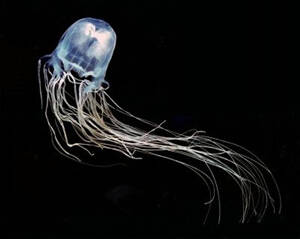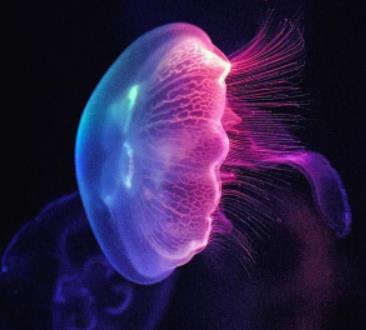Jellyfish
IUCN
LCBasic Information
Scientific classification
- name:Jellyfish
- Scientific Name:Medusozoa
- Outline:Coelenterata
- Family:
Vital signs
- length:
- Weight:
- lifetime:
Feature
The jellyfish is a very beautiful aquatic animal. Its body shape is like a transparent umbrella, and the diameter of the umbrella-shaped body varies. The main component of the jellyfish body is water. It uses the reflection of the water spray in its body to move forward. From a distance, it looks like a round umbrella floating rapidly in the water.
Distribution and Habitat
Jellyfish are found in waters all over the world, with more than 200 species discovered, whether in tropical or temperate zones, shallow or deep seas, or even in freshwater. Jellyfish have existed since the Ediacaran period.
Appearance
Jellyfish have no brain, bones, heart, blood, gills, mouth, etc. The water content of the body is generally more than 95%. The shape is like a transparent umbrella. There are some whisker-like tentacles on the edge of the umbrella, some of which can be as long as 20-30 meters. Jellyfish have no eyes and mouth, but there are eye spots in the gaps on the edge of the umbrella that can sense the intensity of light. Most of the large, colorful and eye-catching jellyfish found in coastal waters around the world are species of the class Aequorea. They are usually 2-40 cm in diameter, but the largest species, the lion's mane jellyfish, can reach a diameter of 2 meters.
Details
Jellyfish are important plankton in aquatic environments, including the Scyphozoa, Cross-Jellyfish, and Cubozoa in the Cnidaria. They can be found in tropical waters, temperate waters, shallow waters, oceans about 100 meters deep, and even freshwater areas. Jellyfish have existed as early as 650 million years ago, and their appearance was even earlier than dinosaurs. There are more than 250 species of jellyfish in the world's waters, and they are distributed in waters all over the world. All live in the ocean. The life cycle of jellyfish is very complicated, and the life span varies. Most jellyfish only live for a few weeks or months. Related research is also relatively lacking. The most special one is the Turritopsis nutricula, which can achieve "immortality" through repeated reproduction and transdifferentiation.
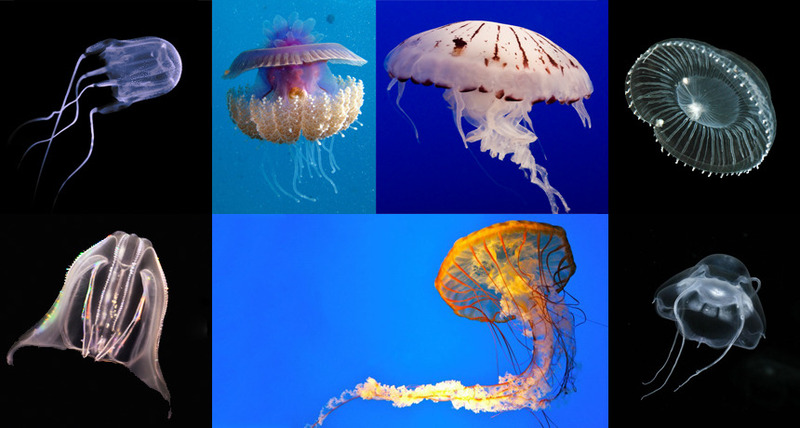
All jellyfish are carnivorous animals, and they feed on fish and plankton. When hunting, jellyfish are very passive and only prey on animals that swim to their side. They use the nematocysts on their tentacles to sting or kill their prey, and then send the food to their mouths and digestive cavities. Most jellyfish are almost transparent, making it difficult for enemies to detect them. Some jellyfish can glow, and the faint light emitted by their bodies can easily attract prey.
Despite the protection of jellyfish with nematocysts, sea turtles and sunfish still feed on them, and jellyfish are also a delicacy for many people. If the number of sea turtles decreases, the reproduction rate of jellyfish will increase sharply. Over-reproduction of jellyfish will naturally affect the reproduction of other fish and plankton, causing the ecosystem to be unbalanced.
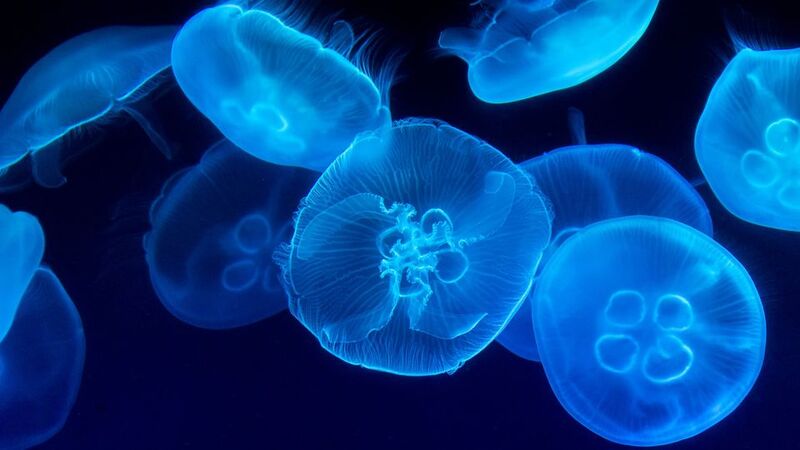
In the seas from Malaysia to Australia, there are two types of jellyfish called Australian box jellyfish and dragging hand jellyfish. The toxicity they secrete is very strong. If you are stung by them, you will have difficulty breathing and die within a few minutes. Therefore, they are also called killer jellyfish. People stung by such jellyfish can die in a short time. But in most cases, stings only cause extreme pain, nausea, rashes and welts, sometimes lasting for weeks. After being stung by a jellyfish, if you have difficulty breathing, you should immediately perform artificial respiration or inject a cardiotonic. Don't be careless and seek medical help quickly.
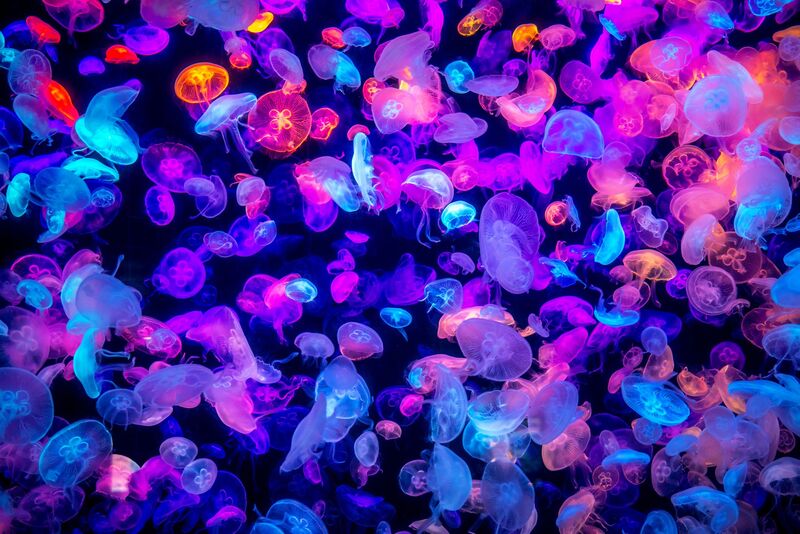
Although jellyfish look beautiful and gentle, they are actually very ferocious. Because jellyfish have no respiratory organs and circulatory system, only primitive digestive organs, the captured food is immediately digested and absorbed in the coelenteron. Once a jellyfish encounters prey, it will never let it go easily. But just like rhinos coexist with birds that clean up parasites for them, jellyfish also have their own symbiotic partners. It is a kind of double-finned pomfret (Nomeus gronovii), commonly known as small shepherd fish. It is only 7 cm long and can swim freely between the tentacles of jellyfish without being afraid at all. When encountering a big fish, the small shepherd fish swims to the middle of the tentacles under the giant umbrella as a safe "refuge", using the device of the jellyfish's stinging cells to cleverly avoid the attack of the enemy. Sometimes, the small herder fish can even lure the big fish into the hunting range of the jellyfish and kill it, so that they can eat the leftover scraps of the jellyfish. Why don't the stinging cells on the jellyfish's tentacles harm the small herder fish? This is because the small herder fish is flexible and can cleverly avoid the poisonous threads, so it is not easily harmed. It is just that occasionally it accidentally dies from the poisonous threads. Jellyfish and small herder fish live together and use each other. The jellyfish "protects" the small herder fish, and the small herder fish swallows the small creatures living on the jellyfish. Although jellyfish look beautiful and gentle, they are actually very fierce. Because jellyfish have no respiratory organs and circulatory systems, they only have primitive digestive organs, so the captured food is immediately digested and absorbed in the coelenteron. Once jellyfish encounter prey, they never let it go easily. But just like rhinos coexist with birds that clean parasites for them, jellyfish also have their own symbiotic partners. It is a kind of double-finned pomfret (Nomeus gronovii), commonly known as the small shepherd fish. It is only 7 cm long and can swim freely between the tentacles of jellyfish without being afraid at all. When encountering a big fish, the small shepherd fish swims to the middle of the tentacles under the giant umbrella, using it as a safe "refuge". It uses the device of the jellyfish's stinging cells to cleverly avoid the attack of the enemy. Sometimes, the small shepherd fish can even lure the big fish into the hunting range of the jellyfish to kill it, so that it can also eat the leftover fragments of the jellyfish. So why don't the stinging cells on the jellyfish's tentacles hurt the small shepherd fish? This is because the small shepherd fish is flexible and can cleverly avoid the poisonous threads and is not easily hurt. It is just that occasionally it accidentally dies from the poisonous threads. Jellyfish and small shepherd fish live together and use each other. The jellyfish "protects" the small shepherd fish, and the small shepherd fish swallows the small creatures living on the jellyfish.
Jellyfish can reproduce both asexually and sexually. After the sperm and egg of a jellyfish combine, it generally goes through four stages: floating body, polyp, disc-shaped body, and jellyfish larvae before it can develop into a jellyfish body.
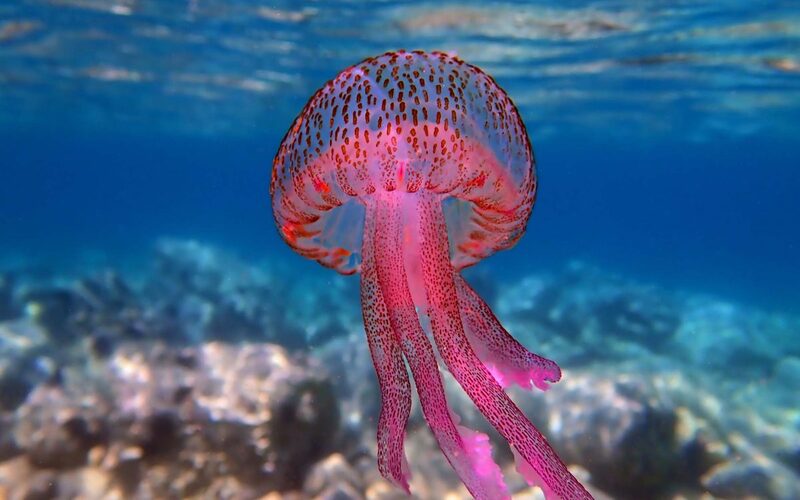
The principle of jellyfish luminescence has always been an important research topic. In 2008, Osamu Shimomura, a senior researcher at the Woods Hole Marine Biological Laboratory in the United States, Martin Chalfie, a professor at Columbia University in the United States, and Roger Tsien, a professor at the University of California, San Diego, won the Nobel Prize in Chemistry that year for studying the principle of luminescence.
Natural enemies of jellyfish
Currently, the creatures known to prey on jellyfish in nature include:
Sharks: Sharks occasionally prey on jellyfish, but most of the time they don't.
Sea turtles: They prey on jellyfish for a living. Except for their eyes, the rest of their bodies can resist the toxicity of jellyfish. They close their eyes when they prey on jellyfish. However, because there is a lot of garbage in the sea, it often happens that sea turtles suffocate to death by inhaling floating plastic bags as jellyfish.
Mambo fish: They prey on jellyfish for a living.
Purple snail: Found in the warm waters of the tropical Pacific Ocean, it loves to eat jellyfish floating on the surface of the water.
Humans: Some people eat jellyfish and make them into a dish called jellyfish skin.

